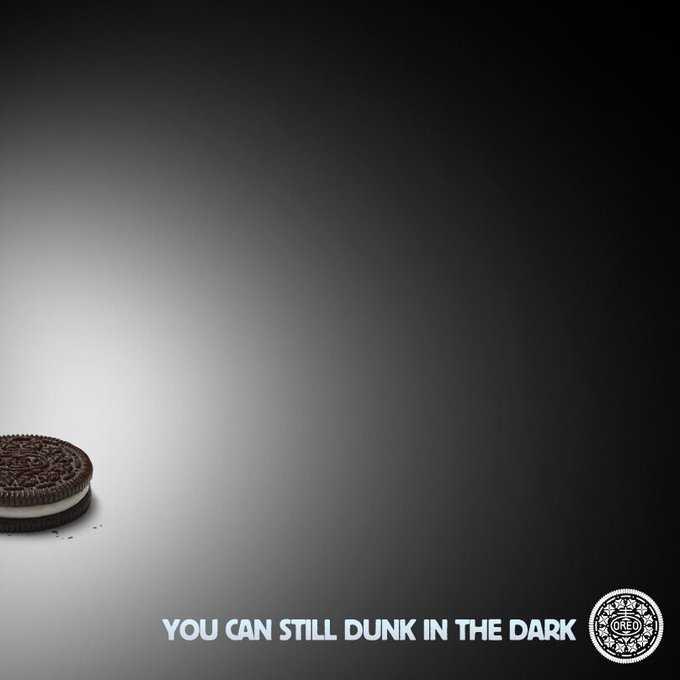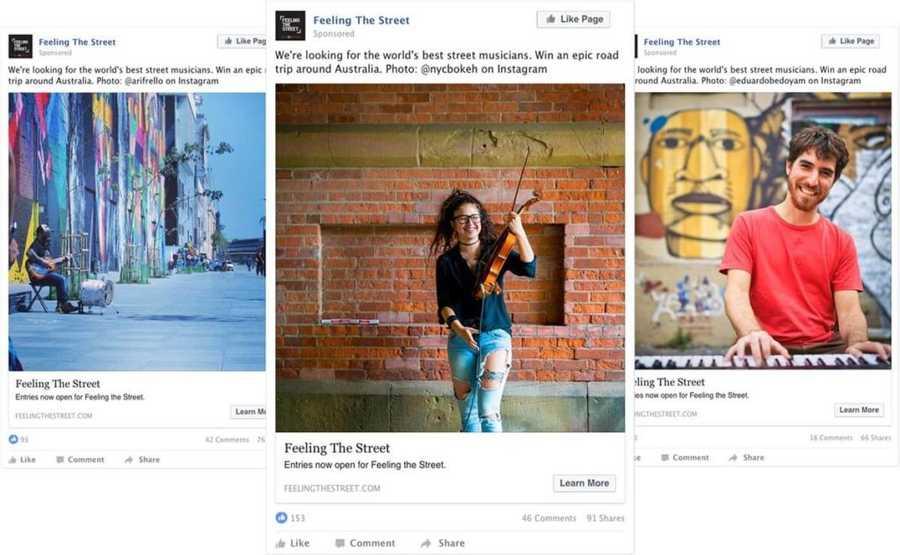Explore the World's Best Ideas
Join today and uncover 100+ curated journeys from 50+ topics. Unlock access to our mobile app with extensive features.
A/B testing
A/B testing, also known as split testing, measures two social media posts against each other to see which performs best.
The most common way of using A/B tests is to only change one element of the post between the two versions (headline, image, CTA, etc) so that you know any difference in performance is because of that change.
You can A/B test with both organic and paid posts.
295
1.72K reads
Algorithm
In social media terminology, however, people often use ‘algorithm’ as a shorthand for ‘feed algorithm’, which is the set of rules a social network uses to automatically decide which posts come first in your feed. For example, if Facebook decides that it wants to prioritize posts with lots of comments, it adjusts the rules of its feed algorithm to push those posts up.
275
907 reads
Analytics
Analytics is the way you interpret and find patterns in data. In a social media context, analytics is the process of following metrics on your social media performance and using that data to improve your strategy. For instance, watching your engagement rate over time to see if your posts are becoming more or less compelling to your followers is one way of using social analytics.
272
723 reads
Application Programming Interface (API)
An API is a set of building blocks that programmers can use to develop computer programs. As far as social media is concerned, all the major social networks have their own APIs that let programmers create their own software that works with the networks. Third party social media tools rely on social media APIs to integrate with platforms like Facebook.
278
676 reads
Evergreen content
In content marketing, evergreen content is content that ages well and maintains its value over time. Evergreen content is ideal for recycling and repurposing on social media since it does not lose relevance based on the date it’s posted. For example, an article on the challenges of being a social media marketer is more likely to be evergreen than an article about Tik Tok’s latest feature update.
279
667 reads
Cross-channel
In social media marketing, each network (Facebook, Twitter, etc.) is also a marketing channel. Something that is cross-channel, then, goes across all your different social networks. For example, a cross-channel social strategy is a strategy that aligns your objectives across all the social networks your brand is present on.
274
616 reads
Listicle
A listicle is a list-based article. This type of content is often popular on social media because of its quick, easy-to-digest format. For example, an article like 21 Tips to Massively Increase Instagram Engagement would be considered a listicle because of its point-by-point breakdown.
278
550 reads
Newsjacking
Newsjacking is the technique of hopping on current events with your social media content. Social media managers often engage in newsjacking to seem timely and relevant while gaining exposure by tying their content to key hashtags and conversations around the latest news. For instance, during a power outage at the 2013 Super Bowl that millions across America were following, Oreo got tons of engagement with this real-time tweet
276
519 reads
Ephemeral content
It refers to posts on social media that delete themselves automatically after a set amount of time has passed. Instagram and Snapchat Stories are notable examples, as these sets of photos and videos disappear after 24 hours. In social media marketing, disappearing content is used to be spontaneous and timely while motivating users to engage through FOMO.
279
510 reads
Dark post
A dark post is a social media ad that doesn’t appear on the advertiser’s timeline. Unlike organic posts or boosted posts, dark posts only show up in the feeds of users they’re targeting. “Dark post” is an informal term—on Facebook, they’re officially called “unpublished page posts”, on Twitter they’re called “promoted-only tweets”, on LinkedIn they’re called “direct sponsored content”, and on Instagram, all ads are dark posts by default.
283
473 reads
Dark social
Dark social is often confused with dark posts, but the two social media terms actually have nothing in common. Dark social is web traffic coming from social media that analytics tools struggle to track. This is often due to users sharing links privately on social in chats or direct messages. One study found that 84% of consumer content sharing happens on dark social.
278
399 reads
Relevance score
Relevance score is a metric available in Facebook Ads Manager that tells you how well your target audience is responding to your ad on a scale of 1 to 10. The score is based on several factors, including positive feedback such as clicks or likes, negative feedback such as users selecting “I don’t want to see this ad”, and overall ad performance. The higher your relevance score, the more relevant your ad is to your target audience and the more likely it will be selected over other ads to be shown to your audience.
273
283 reads
Average response time
Average response time is a social customer service metric. It is the average time it takes a brand to reply to questions or complaints on social media. Consumer expectations of social customer support response times have become more and more demanding in recent years, with 42% of customers now expecting a response within 60 minutes.
273
290 reads
Vanity metric
A vanity metric on social media is a statistic that may look like a positive indicator of performance but doesn’t actually provide you with valuable insights. Impressions are a classic example as they are often larger than reach, but only tell you how many times people scrolled past a post in their feed without revealing the bigger picture of how popular or engaging the post was.
274
278 reads
Boosted post
A boosted post is a Facebook post that you put money behind to increase its reach. Also known as promoted posts, boosted posts differ from Facebook ads in that they start out as organic posts and then get additional paid reach based on your spend. Also, you can launch them directly from your Facebook Page without using Ads Manager. Like Facebook ads, though, boosted posts allow you to target a specific audience and set an exact boost duration and budget.
273
205 reads
Brand advocate
A brand advocate on social media is a customer who posts positive messages, leaves positive reviews, or otherwise supports your brand on social. Brand advocates may also encourage other users to use your products or services through word-of-mouth marketing.
275
252 reads
Clickbait
Clickbait is content that uses manipulative copy to convince users to click on it. Clickbait tends to rely on exaggeration and withholding information to push people into clicking. For example, an article with the headline “Doctors HATE him for using this one WEIRD TRICK…” but just says you should work out regularly is considered clickbait because it compels people click it to learn more while being thin on actual content. Social networks like Facebook consider clickbait spammy and lower its reach accordingly.
271
233 reads
Clickthrough rate (CTR)
On social media, the clickthrough rate is the percentage of people that see your post who click on it. What counts as a click and what counts as ‘seeing your post’ vary by social network. On Facebook, CTR is equal to (link clicks / post impressions) x 100%.
269
241 reads
Conversion rate (CVR)
In social media terminology, conversion rate is the percentage of users who see your post or ad who then take a specified action. That action is called a conversion, and it could mean purchasing an item, signing up for a newsletter, downloading an ebook, or a variety of other acts. If your social media marketing goal is to increase conversions, your CVR is an important metric for analyzing how effective your post or ad is.
273
194 reads
Cost per click (CPC)
Cost per click is a social media advertising metric that tells you how much you’re paying for each click on your ad on average. If your social media marketing goal is to drive traffic to a landing page or a piece of content, a low CPC means you’re getting more traffic at a lower price, while a high CPC means you’re paying a lot for traffic. CPC can vary based on many factors, including who you’re targeting with your ad, what locations you’re targeting, and how relevant your ad is to your target audience.
273
216 reads
Cost per mille (CPM)
Cost per mille is another social advertising metric. It refers to how much you pay per 1,000 impressions (‘mille’ means 1,000 in Latin). If your goal is to get your ad in front of as many eyes as possible and spread brand awareness, CPM is an important metric to follow. Like CPC, CPM varies based on your targeting options and the quality of your ad.
272
213 reads
Crisis Management
Social media crisis management is how you handle events or interactions that could potentially damage your company’s reputation. Inappropriate posts by someone at your company or a social media boycott against your brand may qualify as social media crises, while a couple of angry comments from customers would not. Crisis management requires social media managers to respond quickly and follow a plan in order to de-escalate the problem at hand.
273
176 reads
Crowdsourcing
Crowdsourcing on social media means using a large group of people to generate ideas, services, or content via a social network. It lets followers feel involved and engaged with your brand’s activity while generating ideas or content for your brand. Examples could be inviting your followers to vote on names for your new product or asking them to send in song submissions for your upcoming commercial.
272
187 reads
Engagement rate
Engagement rate is a social media metric that tells you much a post is motivating people to interact with it. It’s defined as (number of people who engaged with your post / number of people who saw your post) x 100%. Typically, a higher engagement rate means your post was more compelling (or at least more likely to provoke a response). Engagement rate is difficult to compare across social networks, as what counts as an “engagement” and what counts as “seeing your post” is different on each network. “Seeing your post” could refer to reach or impressions, while “engagements” may include likes, c
273
160 reads
Social customer service
Social customer service (or social customer care) is customer service via social media. This may include answering customer inquiries, handling complaints, and offering support. Private messaging apps are your best bet for social customer service in 2020, with 70% of people now preferring a “message us” over a “call us” button.
269
168 reads
Social listening
Social listening is how social media managers track conversations around key topics, terms, brands and more, often with a specialized software tool. Social listening software gathers mentions, comments, hashtags, and relevant posts from across social media to provide insights on what users are talking about and how. Brands often use these insights to tap into key trends and see what people are saying about them and their competitors.
272
166 reads
User generated content (UGC)
User generated content, or UGC, is fan-created content promoting a brand. UGC can come in the form of videos, images, posts, audio, reviews, articles, and more. Brands often rely on UGC to get users engaged with their social media campaigns and build trust and loyalty with their followers. Toyota, for example, called on their audience to submit videos of them performing street music as part of their Feeling The Street campaign
274
264 reads
IDEAS CURATED BY
Generalist. Great minds discuss ideas, average minds discuss events, small minds discuss people.
Yug Jain's ideas are part of this journey:
Learn more about marketingandsales with this collection
The importance of networking in podcasting
How to grow your podcast audience
How to monetize your podcast
Related collections
Similar ideas
Read & Learn
20x Faster
without
deepstash
with
deepstash
with
deepstash
Personalized microlearning
—
100+ Learning Journeys
—
Access to 200,000+ ideas
—
Access to the mobile app
—
Unlimited idea saving
—
—
Unlimited history
—
—
Unlimited listening to ideas
—
—
Downloading & offline access
—
—
Supercharge your mind with one idea per day
Enter your email and spend 1 minute every day to learn something new.
I agree to receive email updates



